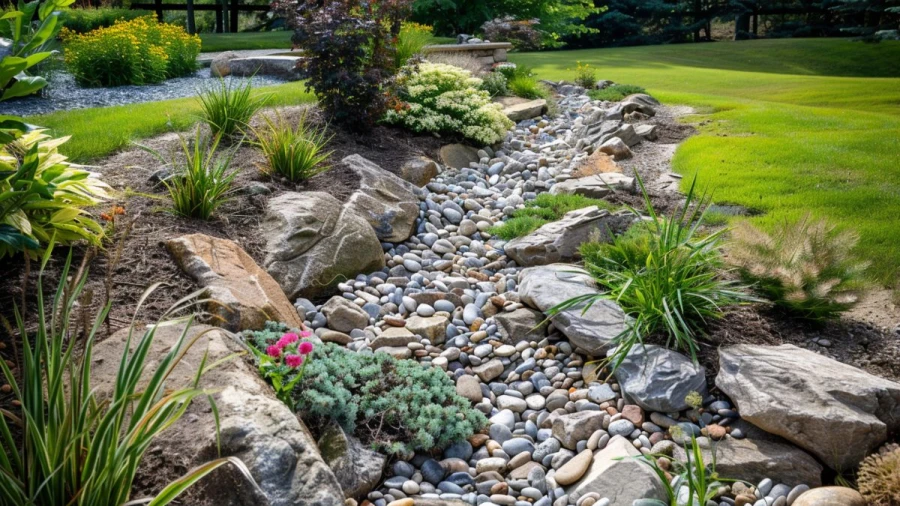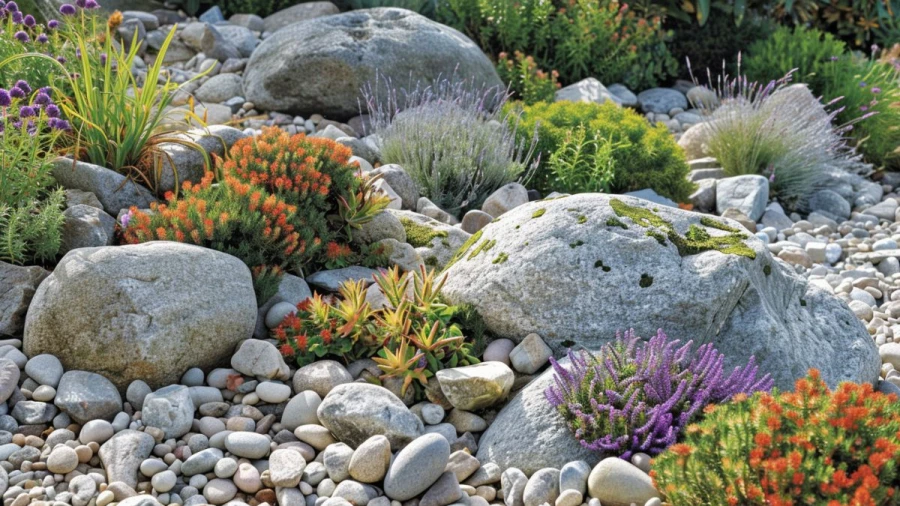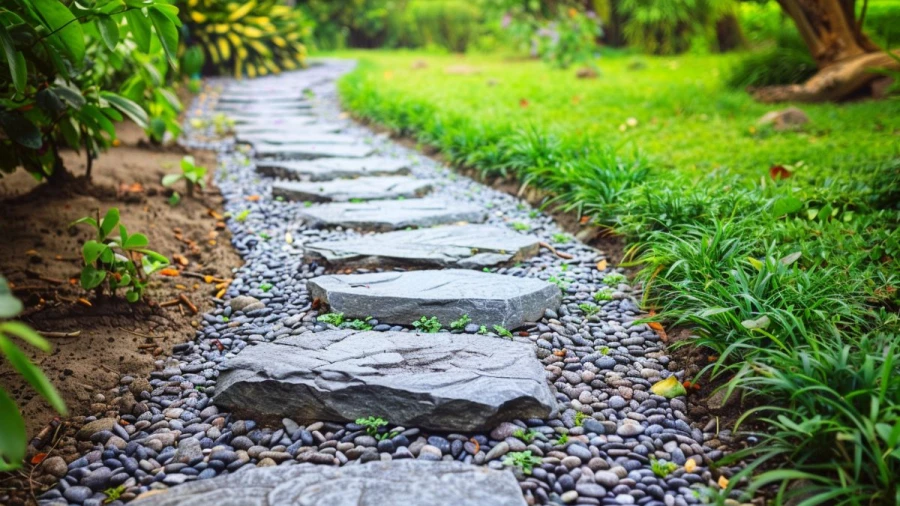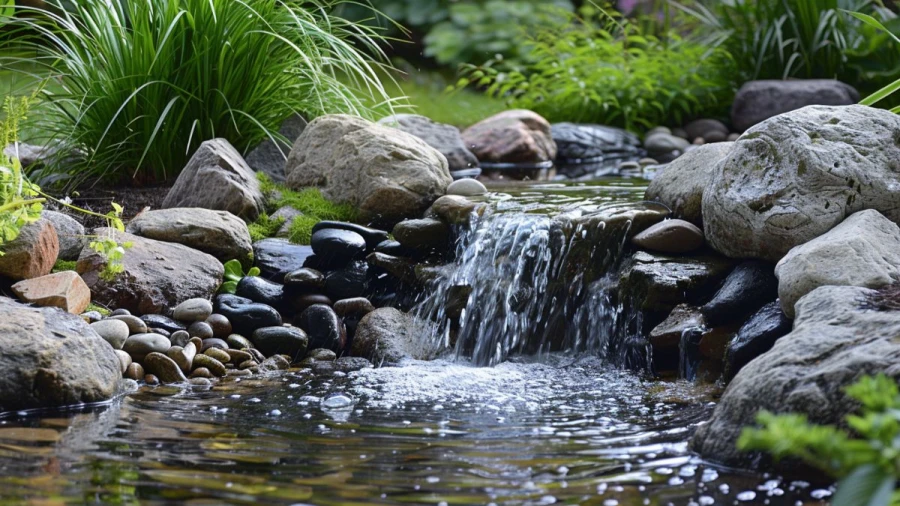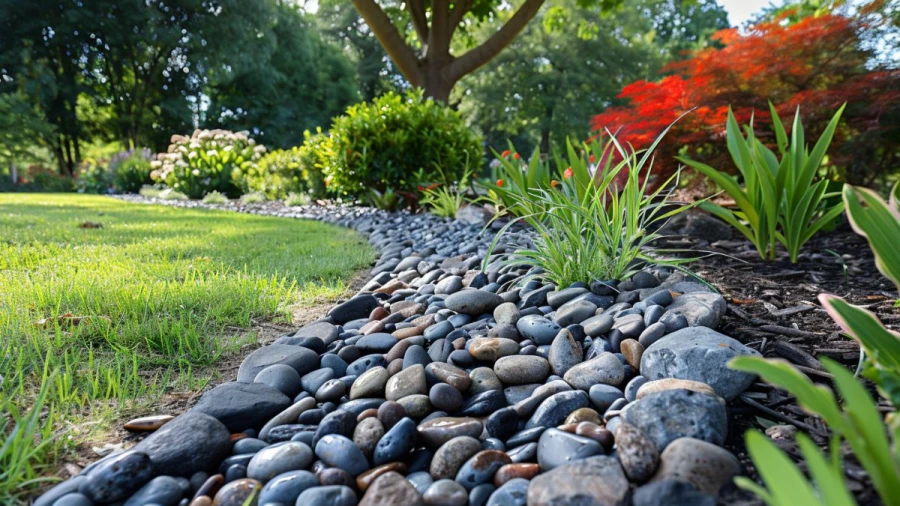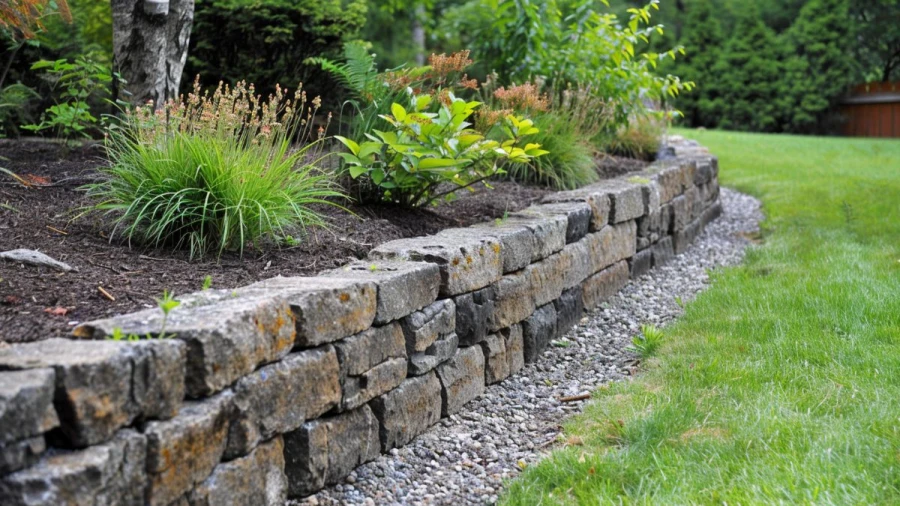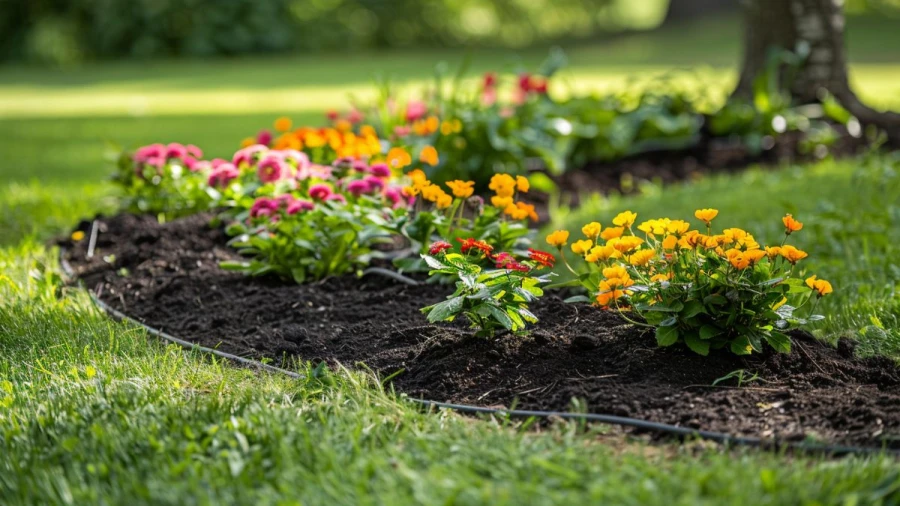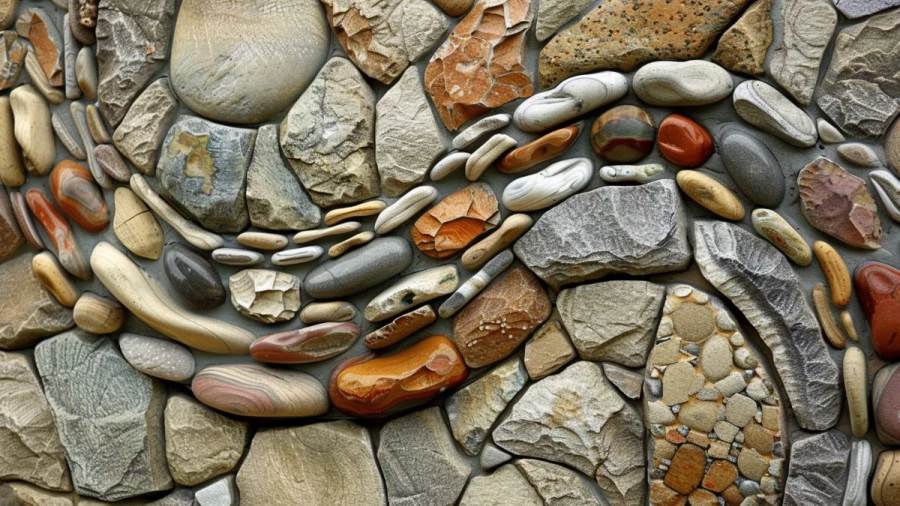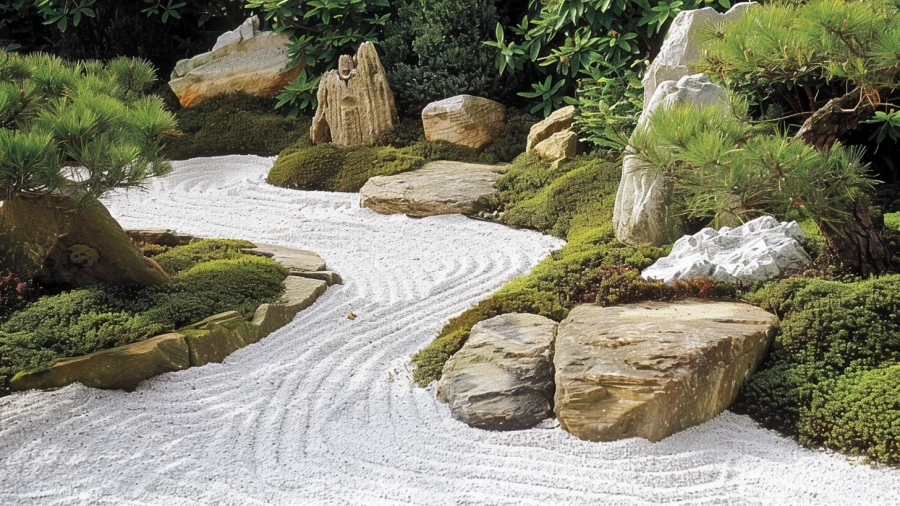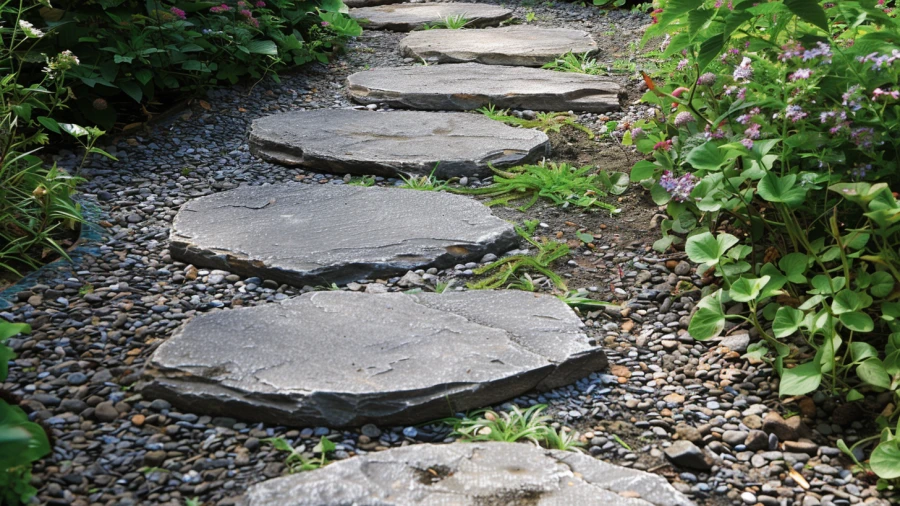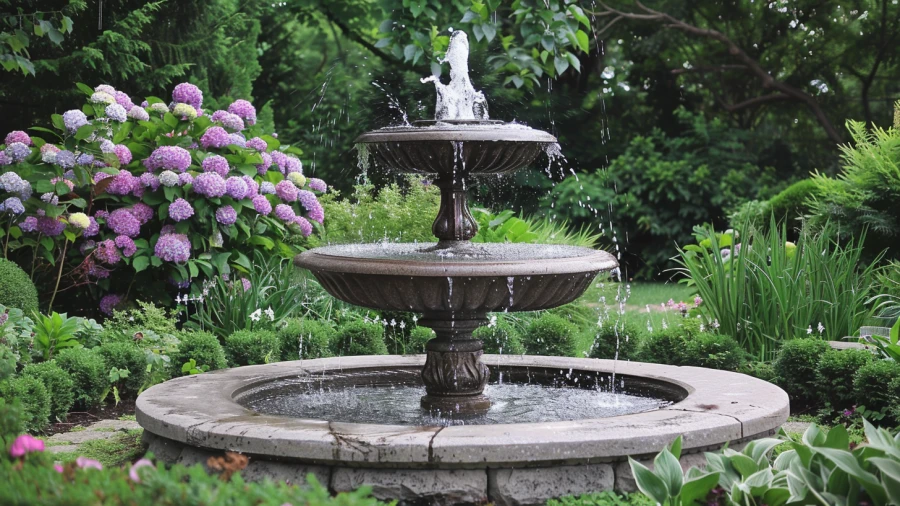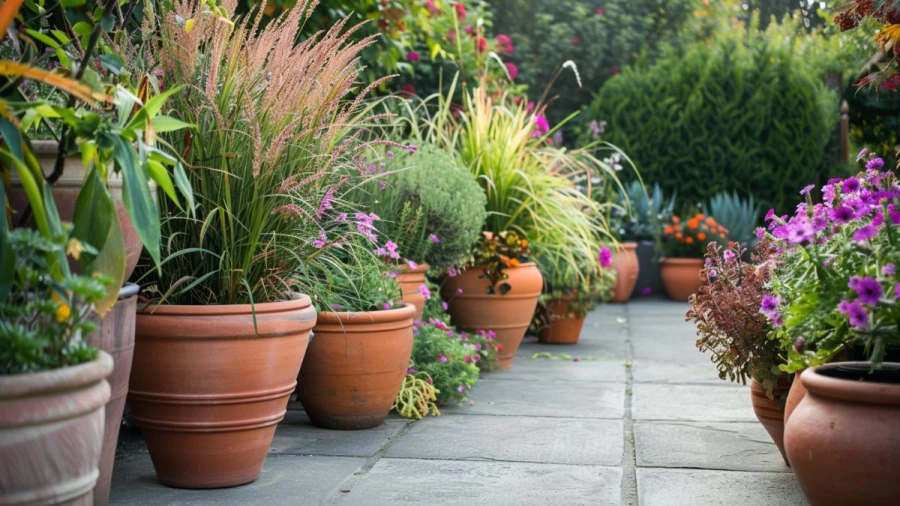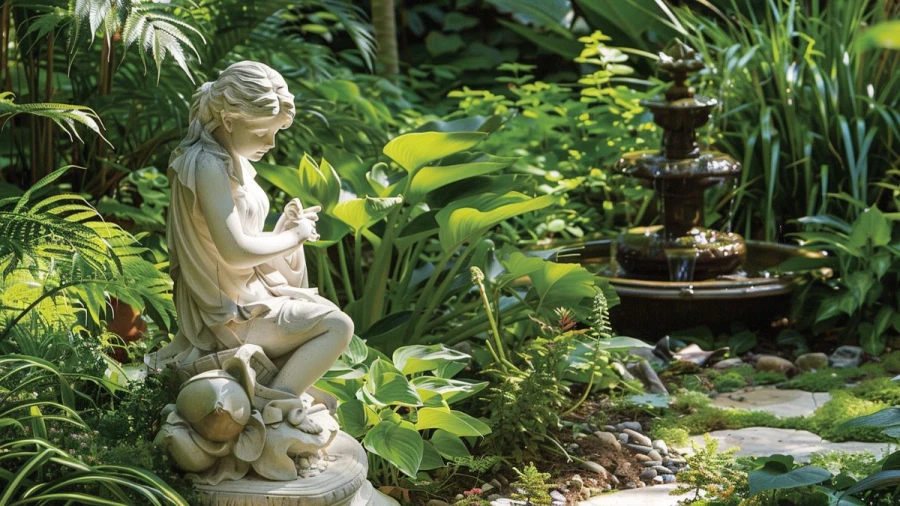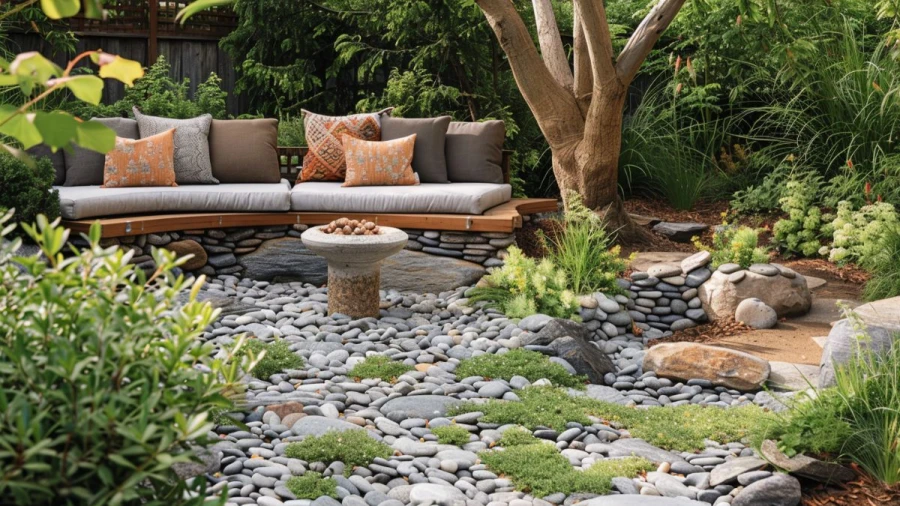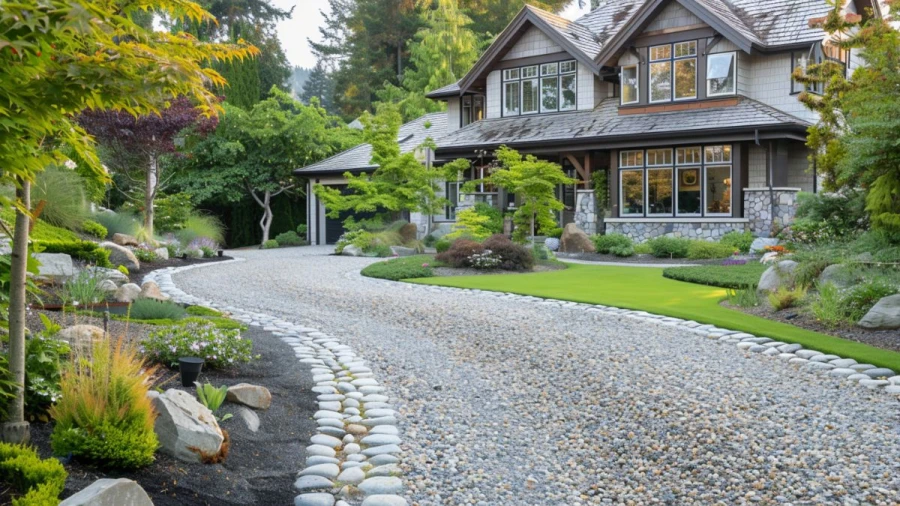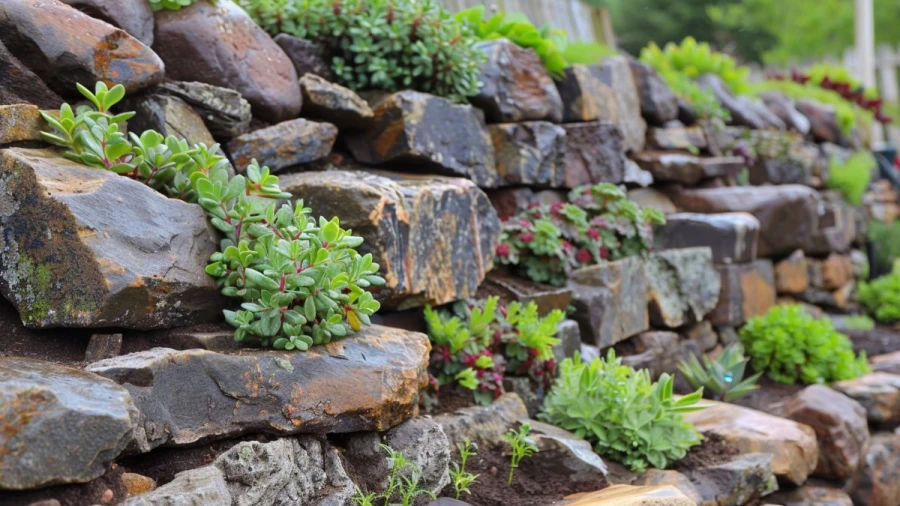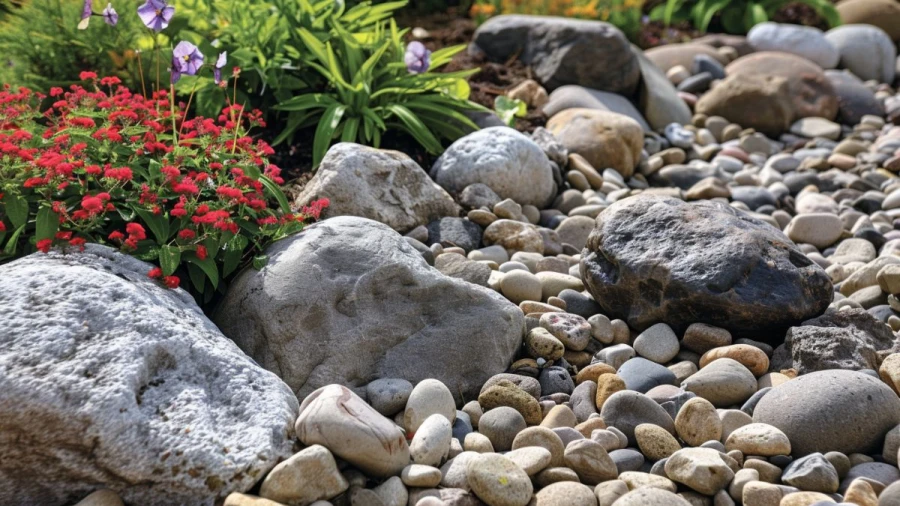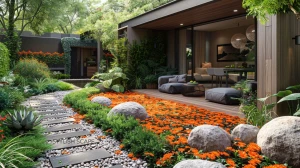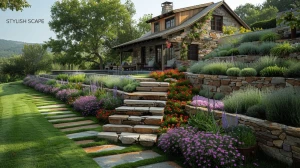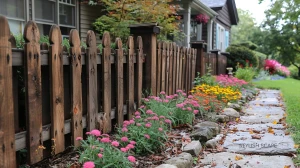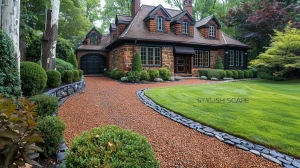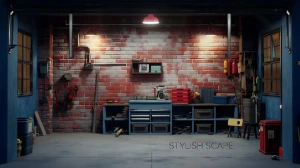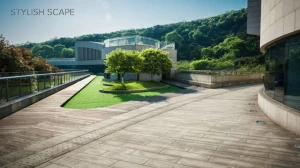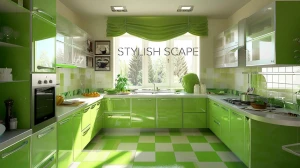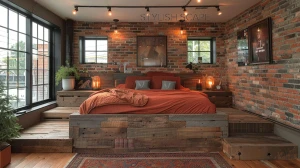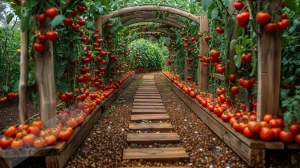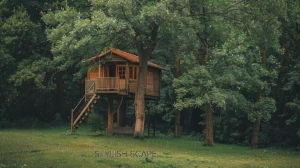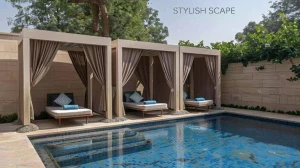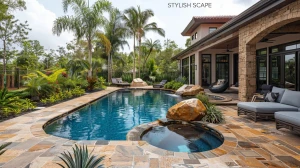
20 Creative River Rock Landscaping Ideas for Stunning Outdoor Spaces
Transform your outdoor space with River Rock Landscaping Ideas that blend beauty and functionality. Our comprehensive guide presents diverse River Rock Landscaping Ideas to enhance your garden or yard. Create a stunning landscape with these innovative tips and techniques.
by Maivizhi A
Updated Aug 24, 2024
On This Page
- River Rock Landscaping Ideas
- Dry River Bed
- Rock Garden
- Pathway
- Mulch Alternative
- Water Feature
- Borders and Edging
- Fire Pit Area
- Retaining Wall
- Flower Bed Base
- Rock Wall Art
- Zen Garden
- Stepping Stones
- Garden Fountain
- Potted Plant Base
- Sculptural Arrangements
- Outdoor Seating Area
- Gravel Driveway
- Rock Wall Planters
- Garden Accent
- Slope Stabilization
- How Do You Create a River Rock Pathway that Blends Seamlessly with Your Garden?
River Rock Landscaping Ideas
River rock landscaping offers a timeless and versatile approach to garden design, transforming ordinary spaces into stunning natural retreats. These smooth, rounded stones, often sourced from riverbeds, bring a touch of nature’s elegance to outdoor environments. Whether used as ground cover, in garden beds, or as part of a water feature, river rocks are prized for their aesthetic appeal and practical benefits. Their unique textures and colors can complement a variety of landscaping styles, from contemporary minimalist to rustic charm.
Incorporating river rocks into your landscape not only enhances visual interest but also serves functional purposes. They are excellent for improving drainage, reducing soil erosion, and minimizing weed growth. Their durability and low maintenance requirements make them a cost-effective choice for creating lasting beauty in your garden.
From creating serene rock gardens and decorative pathways to crafting stylish rock walls and fire pits, the possibilities are endless with river rocks. Explore creative ways to integrate these natural gems into your landscape design, and discover how they can elevate your outdoor space into a picturesque and functional haven.
Dry River Bed
A dry river bed is a landscaping feature designed to mimic a natural stream or river, but without water. It's created by arranging a variety of rocks and stones in a shallow, sloping area of your garden. The goal is to give the appearance of a waterway that has dried up. This feature helps with drainage and can prevent soil erosion during heavy rains.
To build one, start by outlining the shape of the river bed with a garden hose or string. Then, remove the grass and topsoil, and lay down landscaping fabric to prevent weeds. Finally, fill the area with a mix of large and small rocks, and add gravel to fill in gaps. You can enhance the look with plants that thrive in dry conditions, such as succulents and ornamental grasses.
Rock Garden
A rock garden is a landscape design that uses rocks and stones to create an attractive, low-maintenance garden. It often features a mix of boulders, gravel, and smaller stones, arranged to form interesting shapes and patterns. To create a rock garden, start by choosing a sunny spot with good drainage.
Clear the area of weeds and grass, then lay down a layer of landscaping fabric to prevent weeds from growing through. Arrange the rocks in a natural-looking way, using larger boulders as focal points and smaller stones to fill in gaps. Add gravel or small pebbles between the rocks for a clean look. Select drought-tolerant plants, such as alpine or succulent varieties, to grow in the spaces between the rocks. These plants thrive in the rocky, well-drained soil and add color and texture to the garden.
Pathway
A pathway is a practical and decorative element in landscaping that provides a clear route through your garden. It can be made from various materials, including stone, gravel, or paving slabs. To build a pathway, start by marking the desired route with string or a garden hose. Dig out the path to a depth of about 4-6 inches, depending on the material you choose. For a stone or paving slab path, lay down a base of crushed gravel or sand to ensure stability and proper drainage.
Place the stones or slabs in a pattern that suits your style, making sure they are level and evenly spaced. Fill the gaps between the stones with gravel or sand to keep them in place and prevent weeds. For a softer path, use mulch or stepping stones. The pathway enhances both the beauty and functionality of your garden, guiding visitors and protecting your lawn from wear.
Mulch Alternative
River rock is a great alternative to traditional mulch for landscaping. It provides a clean, natural look and comes in various sizes and colors, which can enhance the beauty of your garden. Unlike mulch, river rock does not decompose, so it requires less maintenance over time. It also helps with drainage by allowing water to flow through the soil more effectively, which can be especially beneficial in areas with heavy rainfall.
Additionally, river rock can help keep weeds at bay by forming a barrier that prevents weed growth. While it might be more expensive upfront compared to mulch, its durability and low maintenance can make it a worthwhile investment. Simply spread the river rock evenly over the soil to create a decorative and functional cover for your garden beds.
Water Feature
Adding a water feature with river rocks can create a serene and attractive focal point in your garden. River rocks can be used to build a variety of water features, such as ponds, fountains, or small streams. They help stabilize the structure and blend naturally with the surroundings. For a pond, river rocks can line the edges to create a smooth transition between the water and the land.
In a fountain, they can be used to enhance the base or surrounding area, adding texture and interest. The gentle sound of flowing water combined with the natural look of river rocks can create a relaxing environment. Ensure the water feature is designed to accommodate the flow and size of the rocks to maintain its functionality and aesthetic appeal.
Borders and Edging
Using river rocks for borders and edging is an effective way to define different areas in your garden. They can be used to create clean lines around flower beds, pathways, or driveways. River rocks are available in various sizes and colors, allowing you to choose an option that complements your garden design. They provide a durable and attractive alternative to traditional edging materials like wood or plastic.
To install, simply place the rocks in a trench along the edge of the area you want to define. This will create a natural-looking barrier that helps keep soil and plants in place, prevents grass from spreading, and adds a decorative touch to your landscaping. River rocks are also low-maintenance and can withstand various weather conditions, making them a practical choice for garden borders.
Fire Pit Area
A fire pit area is a great addition to any backyard, providing a cozy spot for gathering with friends and family. To create a fire pit area, start by choosing a safe location away from flammable structures. Surround the pit with seating, like benches or chairs, to ensure everyone has a comfortable place to sit. Use gravel or pavers for the ground to help with drainage and reduce fire hazards.
You can also add decorative elements such as outdoor rugs, lanterns, or cushions to make the space more inviting. Consider installing a pergola or an umbrella for shade and protection from the elements. This setup will not only enhance your outdoor living space but also offer a perfect place to enjoy evenings around a warm, crackling fire.
Retaining Wall
A retaining wall is useful for preventing soil erosion and creating level areas in your garden. To build one, start by choosing a durable material like stone, brick, or concrete blocks. First, dig a trench for the base of the wall to ensure stability. Then, lay down the base material, such as gravel, and begin stacking the blocks or stones. Make sure each layer is level and properly aligned.
Add drainage pipes behind the wall to prevent water buildup that could weaken it. You can enhance the wall’s appearance by incorporating plants or flowers along the top or base. A well-constructed retaining wall can add structure and visual interest to your yard while solving practical landscaping challenges.
Flower Bed Base
Creating a flower bed base helps to highlight and protect your flowers while adding beauty to your garden. Start by choosing a location with adequate sunlight and good soil drainage. Outline the shape of your flower bed with a garden hose or stakes. Remove any grass and weeds from the area, then loosen the soil and mix in compost to improve fertility.
You can use edging materials like bricks, stones, or plastic borders to define the flower bed and prevent soil from spilling into the lawn. Finally, plant your flowers, spacing them according to their needs. Adding mulch on top of the soil will help retain moisture, control weeds, and give your flower bed a neat, finished look.
Rock Wall Art
Rock wall art involves using stones to create beautiful, decorative designs on walls or fences. This can range from simple patterns to intricate murals. To create rock wall art, you can arrange different types and colors of stones in a mosaic pattern or use larger rocks to form a picture or design. Start by cleaning and preparing the wall surface to ensure the rocks adhere properly.
Use strong adhesive or mortar to attach the rocks. Plan your design before starting, and experiment with layouts on the ground first. Once the rocks are in place, fill in any gaps with grout to secure them and give a finished look. Rock wall art adds texture and visual interest to outdoor spaces, making them unique and eye-catching.
Zen Garden
A Zen garden is a peaceful, minimalist space designed to promote relaxation and meditation. It typically features sand or gravel raked into patterns to represent water, along with strategically placed rocks and stones. To create a Zen garden, start with a shallow container or a designated area in your garden. Fill it with sand or fine gravel, and use a rake to create calming patterns.
Add rocks or boulders to symbolize mountains or islands, and consider including small plants or moss for greenery. Keep the design simple and uncluttered to maintain the garden's tranquil atmosphere. Regularly rake the sand to refresh the patterns and help maintain the sense of peace and balance.
Stepping Stones
Stepping stones are flat stones used to create a pathway in gardens or yards, guiding people from one area to another. They provide a practical and aesthetic way to navigate through outdoor spaces. To install stepping stones, first plan the path and mark the locations where the stones will go. Prepare the ground by leveling and compacting the soil where each stone will be placed.
Lay down a base layer of sand or gravel to provide stability and drainage. Place each stone in the prepared spot, ensuring they are level and secure. Stepping stones can be made from various materials, including natural stone, concrete, or even decorative tiles, adding both function and beauty to your landscape.
Garden Fountain
A garden fountain can be a stunning focal point in any yard. To create a beautiful design, consider a classic tiered fountain, where water flows from the top level down to lower levels, creating a soothing sound. You can choose materials like stone, concrete, or even metal to match your garden’s style. Surround the fountain with lush plants and flowers to blend it seamlessly into the landscape.
Adding lighting around the fountain will make it shine at night, adding ambiance and beauty. Make sure to place the fountain in a spot where you can enjoy its calming effects, such as near a seating area or pathway. Regular maintenance, like cleaning and checking the water level, will keep your fountain looking and working its best.
Potted Plant Base
Using potted plants as a base for landscaping is a versatile and attractive option. Start by choosing a variety of pots in different sizes and shapes to add visual interest. Arrange them in clusters or along pathways for a natural, balanced look. Select plants that thrive in your climate and offer different heights, textures, and colors.
For instance, tall grasses or small trees can provide structure, while colorful flowers add vibrancy. You can also use potted herbs or vegetables for a functional touch. Place the pots on decorative stands or in groupings to create layers and depth. Regular watering and occasional replanting will keep your potted plants healthy and lively, enhancing your garden’s appeal.
Sculptural Arrangements
Sculptural arrangements can add an artistic touch to your garden, transforming it into an outdoor gallery. Choose sculptures that reflect your personal style or the theme of your garden, such as abstract pieces, animal figures, or classic statues. Position these sculptures strategically throughout your garden to create focal points and visual interest.
Consider placing them among plants or near garden features like pathways or water features for a harmonious effect. Make sure the sculptures are made of weather-resistant materials, such as stone, metal, or resin, to withstand the elements. Combining sculptures with landscaping elements like rocks or greenery can enhance their impact and integrate them naturally into your garden.
Outdoor Seating Area
Create a cozy and inviting outdoor seating area with river rocks. Start by selecting a flat, stable surface for your seating space. Arrange river rocks in a circular or rectangular pattern to form a natural-looking base. You can use larger rocks as the main seating area and smaller ones for edging. Add comfortable outdoor furniture like cushioned benches or chairs on top of the rock base.
For added comfort and style, include outdoor rugs or cushions that complement the natural tones of the river rocks. Enhance the ambiance with a fire pit or a tabletop lantern in the center, making the space perfect for gatherings or quiet relaxation. Incorporate surrounding plants or low shrubs to create a lush, green backdrop that contrasts beautifully with the stone.
Gravel Driveway
A gravel driveway made with river rocks can add both function and charm to your home’s exterior. Start by measuring the area where the driveway will be laid out. Remove any grass or existing surface material and level the ground. Place a layer of landscape fabric to prevent weeds from growing through the gravel. Next, spread a layer of crushed gravel or river rocks evenly over the area.
For a more stable surface, consider using larger river rocks for the base layer and smaller gravel for the top layer. Edge the driveway with larger stones or timber to keep the gravel contained and prevent spreading. Regularly rake the gravel to maintain an even surface and ensure proper drainage. This simple yet effective design will give your driveway a rustic, natural appearance that enhances your property’s curb appeal.
Rock Wall Planters
Rock wall planters using river rocks can create a stunning and functional garden feature. Begin by selecting a location where you want to build the rock wall. Start stacking river rocks to form a retaining wall. Arrange the rocks with their flatter sides facing outward to create pockets or ledges for planting. As you build up the wall, make sure to leave spaces between the rocks for soil and plants.
Fill these pockets with a mix of potting soil and compost to support healthy plant growth. Choose plants that thrive in your climate and add them to the pockets, ensuring they have enough space to grow. Water the plants regularly and maintain the wall by replacing any fallen rocks and checking for weed growth. This rock wall planter not only adds texture and interest to your garden but also provides a unique way to grow a variety of plants.
Garden Accent
Adding river rocks as a garden accent can transform a dull space into a stunning focal point. These rocks come in various sizes, colors, and textures, allowing you to customize your garden's look. Use them to create eye-catching borders around flower beds or pathways. Placing larger rocks strategically can highlight specific plants or garden features.
For a more polished look, you might use smaller gravel-sized rocks as ground cover between stepping stones or along the base of a retaining wall. River rocks are also excellent for creating low-maintenance areas, as they reduce the need for mulch and can help with weed control. Their natural appearance blends seamlessly with both modern and traditional garden styles, enhancing the visual appeal and adding texture to your outdoor space.
Slope Stabilization
River rocks are an effective solution for slope stabilization, preventing erosion and managing water flow. By using a combination of large and small rocks, you can build a natural-looking barrier that helps stabilize the soil on sloped areas. Start by placing larger rocks at the base of the slope, creating a strong foundation. Fill in the gaps with smaller stones or gravel to ensure a snug fit and provide additional support.
This method allows rainwater to flow through the rocks, reducing runoff and minimizing soil erosion. Additionally, river rocks are durable and weather-resistant, making them a long-lasting choice for slope stabilization. Their natural, rugged appearance also adds a rustic charm to your landscape, blending well with the surrounding environment.
How Do You Create a River Rock Pathway that Blends Seamlessly with Your Garden?
Creating a river rock pathway that blends seamlessly with your garden involves a few key steps:
1. Plan and Design
- Determine the Pathway Location: Decide where you want the pathway to go. Consider the natural flow of foot traffic and the layout of your garden.
- Choose a Design: Select a design that complements your garden style. It can be a straight path, a winding trail, or a more intricate pattern.
2. Prepare the Site
- Mark the Path: Use string, garden hoses, or spray paint to outline the path. Adjust the shape as needed.
- Clear the Area: Remove any grass, plants, or debris from the marked area. Dig out a trench that's about 3-4 inches deep to accommodate the rocks.
3. Create a Base
- Add Landscaping Fabric: Lay down landscaping fabric in the trench to prevent weeds from growing through the rocks.
- Add a Gravel Base: Pour a layer of crushed gravel or sand over the fabric. This provides a stable base for the river rocks and aids in drainage. Level it out and compact it using a tamper.
4. Lay the River Rocks
- Choose the Rocks: Select river rocks that match or complement the colors and textures in your garden. Mix sizes for a natural look.
- Spread the Rocks: Scatter the river rocks evenly over the gravel base. Use a rake or shovel to spread them out and create an even surface.
5. Blend with the Garden
- Edge the Pathway: Install edging materials like metal, stone, or wood along the edges of the pathway to keep the rocks contained and give a finished look.
- Integrate with Garden: Plant ground covers, grasses, or low shrubs along the edges to blend the pathway with the surrounding garden. This helps the pathway look more natural and part of the landscape.
- Consider Accents: Add garden features like stepping stones, small boulders, or decorative elements that complement the pathway and garden design.
6. Maintenance
- Regular Cleaning: Keep the pathway clean by removing leaves and debris. Rake the rocks occasionally to maintain an even surface.
- Weed Control: Check for and remove any weeds that might grow through the landscaping fabric.
By following these steps, you’ll create a river rock pathway that not only enhances your garden but also blends seamlessly with its natural surroundings.

